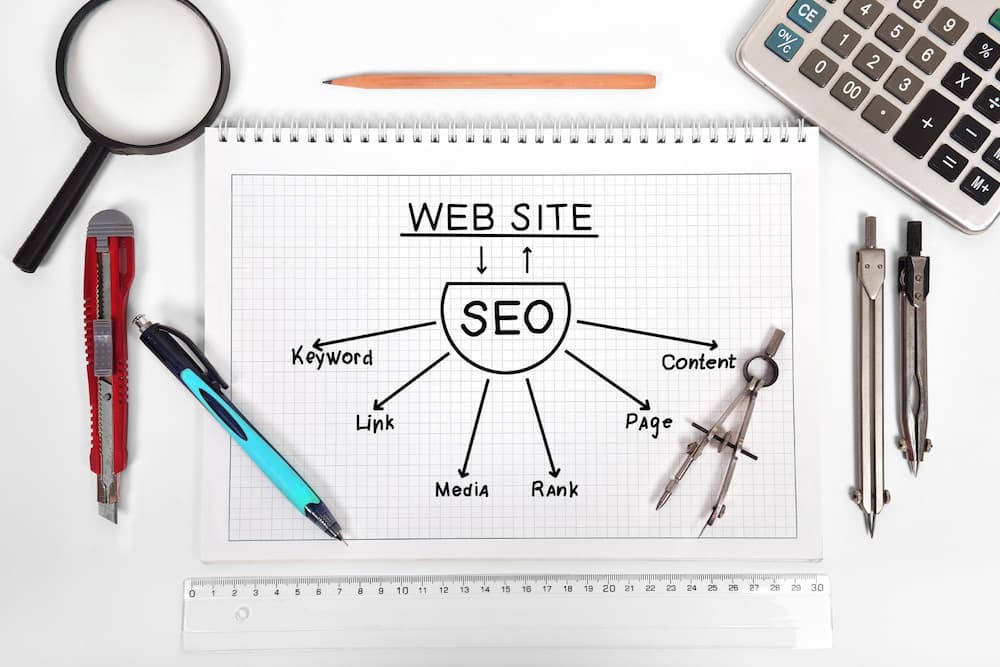When creating an SEO-friendly website, it is important that the site is SEO compatible as well as its visual appeal. SEO (Search Engine Optimization) helps you reach your target audience by making your website more visible. There are many important considerations for creating an SEO friendly website. Each of these is important for the website to appear in search engine results. Making your website SEO friendly is the first step to a successful SEO strategy. An SEO-friendly web design helps search engines, especially Google, understand your site better. Important issues for creating an SEO friendly website are as follows:
Importance of SEO for Website
A good SEO strategy ensures that your site is found and preferred by your target audience. This means more traffic, conversions and business success.
SEO ensures that your site appears at the top of search results with targeted keywords. This means more clicks and more visitors.
In industries with high competition, a good SEO strategy will help you be seen more than your competitors and reach more customers. Thus, your brand awareness increases.
SEO contributes to the user-friendliness of your website. Fast page loading, user-friendly menus and mobile compatibility keep visitors on your site longer. In other words, your site offers an effective user experience.

Key Elements Of an SEO-Friendly Website
SEO-friendly website design helps search engines better understand your site and increase your rankings. The basic principles of creating an SEO friendly website are as follows:
Keyword Research
Keywords are directly related to the search intent of your target audience. Finding the right keywords and using them in your content helps search engines show your site as relevant to queries. In other words, keywords allow the visitor to find relevant information on your site. However, avoid excessive use of keywords. Such a situation may raise suspicion of spam content on your site.
Thanks to long tail keywords, you can attract visitors from many different keyword groups in a single content.
Quality and Original Content
SEO friendly web pages are content focused. Your content must be useful, informative and original. Quality content helps users spend more time on your site and convert. Additionally, adding new content regularly is appreciated by search engines.
URL Structure and SEO Friendly URLs
URLs of web pages should be descriptive and meaningful. URLs that are short, concise and contain keywords are more useful for search engines and visitors. Choosing static URLs instead of dynamic URLs may yield better results in terms of SEO.
Fast and Mobile-Friendly Web Pages
Fast page load times are critical for both SEO and user experience. Slow loading pages can lose visitors and be penalized by search engines. Likewise, mobile versions of websites help users access them from any device without any problems.
Linking and Internal Linking
External links (backlinks) and internal links are an important part of SEO. Links from high-quality and relevant websites increase your site’s authority. With internal linking, you can connect content containing relevant information and enable users to access more information.
Sitemap and Robots.txt File
Having a sitemap and robots.txt file helps search engines crawl and index your site more effectively. The sitemap organizes and indexes your content, while the robots.txt file controls which pages you block from crawling.
Meta Descriptions and Title Tags
Web pages must contain correct meta descriptions and title tags. Title tags should include the main title of the page and important keywords. Meta descriptions contain a summary and description of the page.
Security and SSL Certificate
Keeping your website secure protects users’ data and is rewarded by search engines. Using an SSL certificate ensures that your site starts with “https” and provides a reliable experience for your visitors.
Google Analytics and Other Analytical Tools
Use analytical tools to monitor and improve your site’s performance. Tools such as Google Analytics provide important information about visitor statistics.

Optimizing Website Structure For Seo
It is a fact that search engines (Google, Bing, Yahoo, etc.) rank millions of users’ search results. People generally click more on results found on the first page. Having your website ranked first in search engines allows potential customers or visitors to find you more easily.
An SEO-friendly website is appreciated by both visitors and search engines. The home page, menus and subpages should be easily accessible. Fast page load times are critical for both user experience and SEO. It is becoming increasingly important that your website is compatible with mobile devices.
Website optimization for SEO helps you focus on your target audience’s needs and search terms. This allows your website to receive more traffic from organic search results. Organic traffic brings potential customers to your website without the need for an advertising budget.
Creating High-Quality Content For Seo
One of the common approaches in SEO is that “Content is king.” Any business or personal brand needs to create high-quality content to attract and impress potential customers and visitors.
Search engines aim to provide the best experience to users. Therefore, they reward websites with quality and valuable content. High-quality content helps your site rank higher in search results.
Informative and original content that focuses on keywords allows you to attract more organic traffic. Users look for content that meets their needs, and high-quality content meets this demand. In other words, thanks to high-quality content, your website doesn’t need visitors, visitors need your website.
On-Page Optimization Techniques
If you want your website to be in the first search results of search engines and attract more organic traffic, you should know the basic techniques of on-page optimization. On-page optimization helps search engines better understand your site by optimizing your website’s content, coding, and configuration.
Research Effective Keywords
On-page optimization starts with targeting the right keywords. By doing keyword research, you can understand the user behavior and search habits of your target audience. Content that contains targeted keywords and long-tail keywords has a much higher chance of being found by visitors.
Title Tags
The title tag of each web page should be unique and descriptive. Title tags appear as title text with keywords that appear on search results pages. Additionally, it is important to choose an appropriate title tag for each page.
Creating Effective Meta Descriptions
Meta descriptions serve as the summary text of each page that appears in the SERP. These descriptions summarize the content of the page and give users information about what to expect. Create a unique and impressive meta description for each page.
URL Structure
Your website URLs should be descriptive and meaningful. It is better to prefer static URLs over dynamic URLs. Using keywords in URLs helps you tell search engines what your content is about.
Anchor Texts
Anchor texts are clickable links based on a word or group of words on a web page. They are used in on-page optimization and off-page strategies. While clickable links provided outside the site are considered backlinks, anchor text links used within the site can be used for page transitions or to direct you to a page that provides detailed information for a term.
Images and Alt Texts
Images visually enrich your content, but remember that search engines understand text, not images. Therefore, fill in the alt text of each image properly and add keywords to the image file names. In other words, your content should have optimized images.
Off-Page Seo Strategies For Websites
SEO success of your website is not limited to just content and on-page optimization. Off-page SEO strategies help you increase your online visibility by focusing on factors outside of your website. These strategies are used to increase your site’s authority and credibility. The most important and effective off-page strategies are as follows:
Creating Backlinks
Backlinks are links to your site from other websites. Backlinks from high-quality and relevant websites increase your site’s authority and can lead to higher rankings in search engines.
Content Marketing
Creating and sharing high-quality content is an effective way to increase your website’s popularity. Content marketing strategies can focus on blog posts, infographics, videos, and more. By sharing your content, you can gain more visibility on social media and other platforms.
Social Media Interaction
Interaction on social media can improve your website’s off-page SEO. You can reach more people by sharing your posts on your social media accounts. Remember that social media posts can lead to backlinks and increased traffic.
Using Business Directories
Subscribing to business directories is important for local SEO. You can become more visible in local searches by adding your business name, address and contact information to various business directories. This makes it easier for your local audience to find you.
Analyzing Competitors
Analyzing what your competitors are doing and where they are getting backlinks can help you develop your own off-page SEO strategy.
Monitoring And Analyzing Website Performance
Analyzing and managing your website’s performance is essential to your SEO success. By using the right strategies, you can improve user experience, increase speed, ensure security and attract more organic traffic. Therefore, review your website’s performance regularly and focus on continuous improvement.
Many of the factors and strategies we mentioned above are necessary for an SEO-friendly website. Carrying out these works in a certain order and continuity will make your site visible in the internet world.




